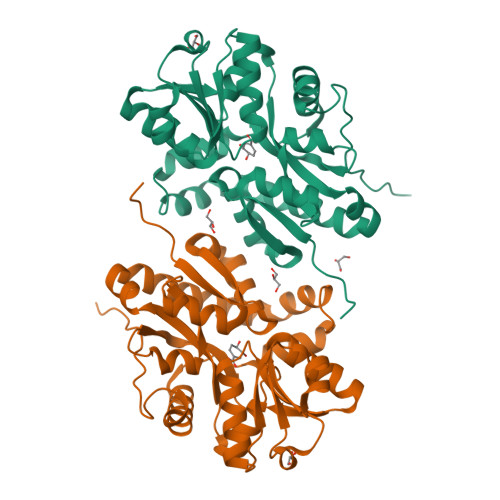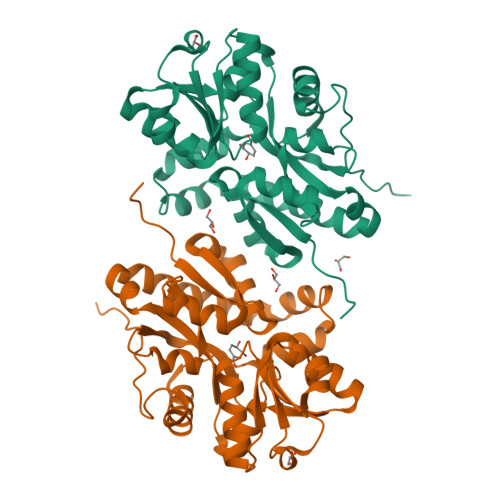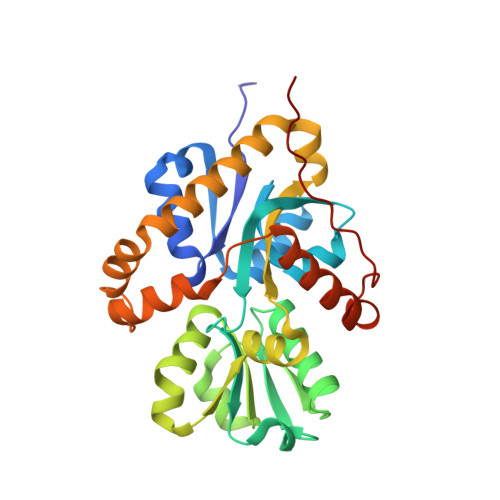Mechanism of chorismate dehydratase MqnA, the first enzyme of the futalosine pathway, proceeds via substrate-assisted catalysis.
Prasad, A., Breithaupt, C., Nguyen, D.A., Lilie, H., Ziegler, J., Stubbs, M.T.(2022) J Biological Chem 298: 102601-102601
- PubMed: 36265588
- DOI: https://doi.org/10.1016/j.jbc.2022.102601
- Primary Citation of Related Structures:
7YWC - PubMed Abstract:
MqnA, the only chorismate dehydratase known so far, catalyzes the initial step in the biosynthesis of menaquinone via the futalosine pathway. Details of the MqnA reaction mechanism remain unclear. Here, we present crystal structures of Streptomyces coelicolor MqnA and its active site mutants in complex with chorismate and the product 3-enolpyruvyl-benzoate, produced during heterologous expression in Escherichia coli. Together with activity studies, our data are in line with dehydration proceeding via substrate assisted catalysis, with the enol pyruvyl group of chorismate acting as catalytic base. Surprisingly, structures of the mutant Asn17Asp with copurified ligand suggest that the enzyme converts to a hydrolase by serendipitous positioning of the carboxyl group. All complex structures presented here exhibit a closed Venus flytrap fold, with the enzyme exploiting the characteristic ligand binding properties of the fold for specific substrate binding and catalysis. The conformational rearrangements that facilitate complete burial of substrate/product, with accompanying topological changes to the enzyme surface, could foster substrate channeling within the biosynthetic pathway.
Organizational Affiliation:
Institut für Biochemie und Biotechnologie, Charles-Tanford-Proteinzentrum, Martin-Luther-Universität - Halle-Wittenberg, Halle/Saale, Germany.


















